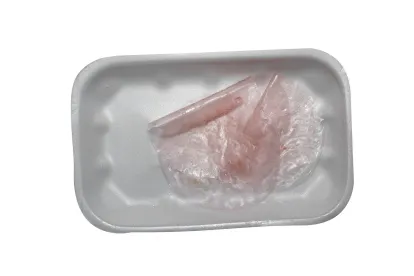PFAS SERIES: PART ONE
Known for being resistant to grease, oil, water, and heat, per- and polyfluoroalkyl substances (PFAS) have had a number of applications in food-contact materials regulated by the US Food and Drug Administration (FDA).
In the last several years, the use of PFAS has attracted heightened regulatory attention. The FDA, for example, has worked to eliminate certain clearances allowing for the use of PFAS in food-contact applications and continues to monitor PFAS in the food supply. States have implemented bans on certain uses of PFAS as well, predominantly in food-contact paper. The patchwork of state legislation has proven difficult for food and food packaging manufacturers to navigate, and the landscape is likely to get more complicated as additional states impose limitations.
In a minute or less, here is what you need to know.
FDA Actions and Broader Federal Initiatives
PFAS are the subject of several FDA clearances for use in food-contact applications.1 Their unique properties have made PFAS desirable in applications such as grease- and water-resistant paper, nonstick cookware, sealing gaskets, and release agents for manufacturing equipment.2 Many of these clearances had been through the FDA’s Food Contact Notification program, established in the early 2000s as a replacement for administratively burdensome notice-and-comment rulemaking process.
The FDA has been working to pare back PFAS clearances since 2016, when it worked to phase out the use of the long-chain PFAS (eight or more carbon atoms in length), including two of the most-studied types: perfluorooctanoic acid (PFOA) and perfluorooctanesulfonic acid (PFOS). The FDA ultimately revoked its regulations authorizing the use of PFOA and PFOS in food-contact applications in the United States.3 This step by the FDA was spurred by data on PFOA and PFOS, indicating their persistence in the environment and in humans.
In 2020, the FDA announced an agreement with manufacturers of short-chain PFAS (typically with six carbon atoms) to voluntarily phase out their sales of 6:2 fluorotelomer alcohol (6:2FTOH) into food-contact applications. 6:2FTOH had been used to provide grease-resistance properties to food-contact paper—the functionality allowing us to eat greasy food wrapped in paper without oil soaking through to our hands and clothing. The phase-out, proceeding over the course of three years, began in January 2021. After the phase-out period and exhaustion of any stock remaining on the market, manufacturers will no longer sell food-contact substances made with 6:2FTOH.
FDA Monitoring of the Food Supply
To assess the potential for Americans to be exposed to PFAS in their diet, the FDA has conducted a comprehensive sampling of the food supply, testing for seven types of PFAS as part of its Total Diet Study.4 Since initiating this PFAS testing in 2019, the FDA has found detectable levels of PFAS in 17 of 718 samples obtained from 24 regional sites (in order to capture possible geographical variation).5
Out of the 17 samples in which PFAS were detected, 14 samples were seafood. In response to these findings, the FDA conducted additional surveillance of PFAS in seafood in 2022, testing clams, cod, crab, pollock, salmon, shrimp, tilapia, and tuna.6 The FDA determined that the estimated exposure to PFOA from samples of canned clams from China was significant enough to pose a potential health concern, and two voluntary recalls were conducted as a result.
The FDA concluded that filter feeders, such as clams and other bivalve mollusks (e.g., oysters, mussels, and scallops), have the potential to bioaccumulate more environmental contaminants like PFAS than other seafood types.7 The 2022 sampling did not otherwise indicate the presence of PFAS at levels posing a human health concern in seafood.
State Responses
In response to public interest and concern regarding PFAS, several states have recently enacted and proposed a variety of different laws to curtail their use. As of early 2023, 11 states (California, Colorado, Connecticut, Hawaii, Maine, Maryland, Minnesota, New York, Rhode Island, Vermont, and Washington) had implemented (or were poised to implement) restrictions, including labeling requirements and bans on the use of PFAS in food packaging containers, cookware, and other products.
The states vary in the scope of restrictions, as well as definitions for PFAS. Most states have banned “intentionally added PFAS,” which are deliberately or intentionally added to impart a specific characteristic or function in the regulated product or product component (e.g., grease resistance). However, other states have also sought to ban PFAS present above certain thresholds, regardless of whether they are intentionally added. For example, New York’s ban covers both intentionally added PFAS and PFAS present at above 100 parts per million in finished food-contact paper.
Challenges Facing Food Companies
Many state bans on PFAS in food-contact paper (e.g., California and New York) were passed with just a few weeks’ time before the effective date, causing tremendous stress and confusion. Regulators in part fail to understand that food companies do not have complete transparency into the composition of their packaging materials, and that finished packaging manufacturers may not have complete insight into the potential use of PFAS by a downstream supplier. Accordingly, food companies had to rapidly seek assurance statements from suppliers put in challenging positions. Non-compliance leaves companies open to possible enforcement risk by California authorities.
The state bans may also have unintended consequences. For example, while there is a desire to lessen the environmental impact of packaging materials by using sources like recycled paper, such materials could be a source of PFAS contamination. As a result, state bans (which often define PFAS in an overly broad way as fluorinated organic chemicals containing at least one fully fluorinated carbon atom, and which call for generalized testing of total organic fluorine) may lead to use of more virgin packaging materials.
Food companies should consult counsel to ensure compliance with these ever-changing federal and state laws and regulations.
FOOTNOTES
1 "Per- and Polyfluoroalkyl Substances (PFAS)," FDA.
2 "Authorized Uses of PFAS in Food Contact Applications," FDA.
3 81 Federal Register 5 (4 January 2016) and 81 Federal Register 83672 (22 November 2016).
4 "Testing Food for PFAS and Assessing Dietary Exposure," FDA.
-
FDA tests for PFOA, PFOS, perfluorononanoic acid (PFNA), perfluorohexane sulfonate (PFHxS), hexafluoropropylene oxide dimer acid (HFPO-DA), perfluorobutane sulfonate (PFBS), and perfluorobutanoic acid (PFBA) using a Liquid Chromatography-Tandem Mass Spectrometry (LC-MS/MS) method.
5 "Questions and Answers on PFAS in Food," FDA.
6 Id.
7 "Testing Food for PFAS and Assessing Dietary Exposure," FDA.





 />i
/>i